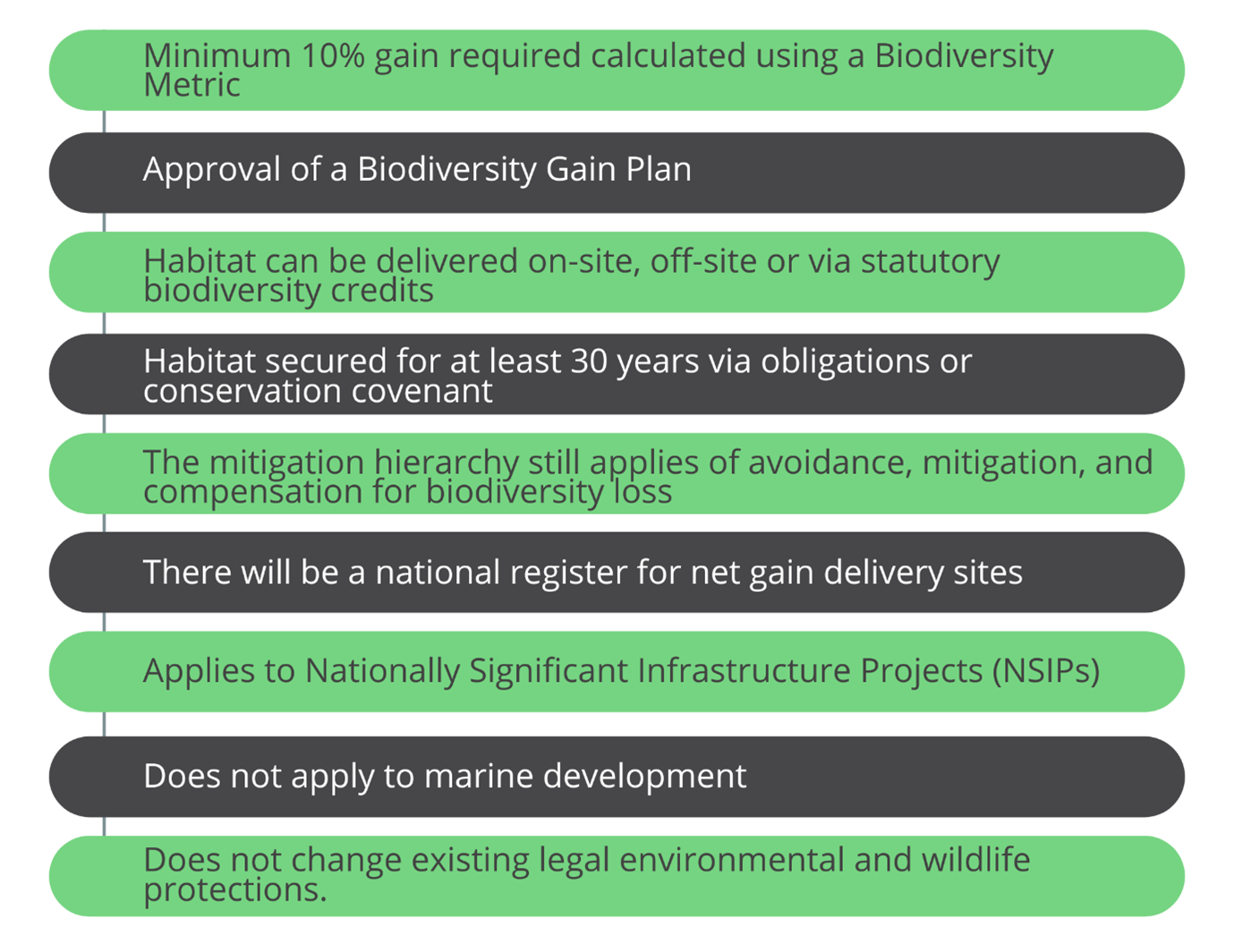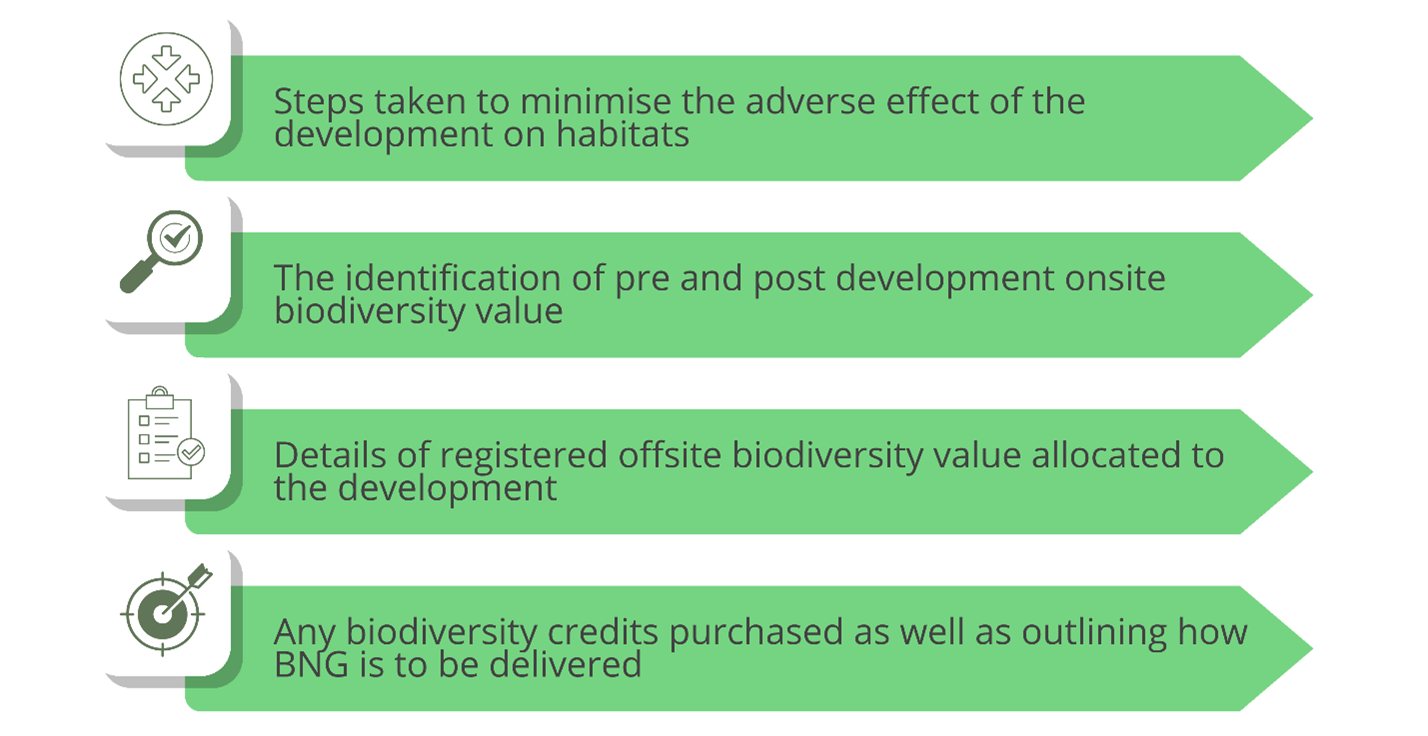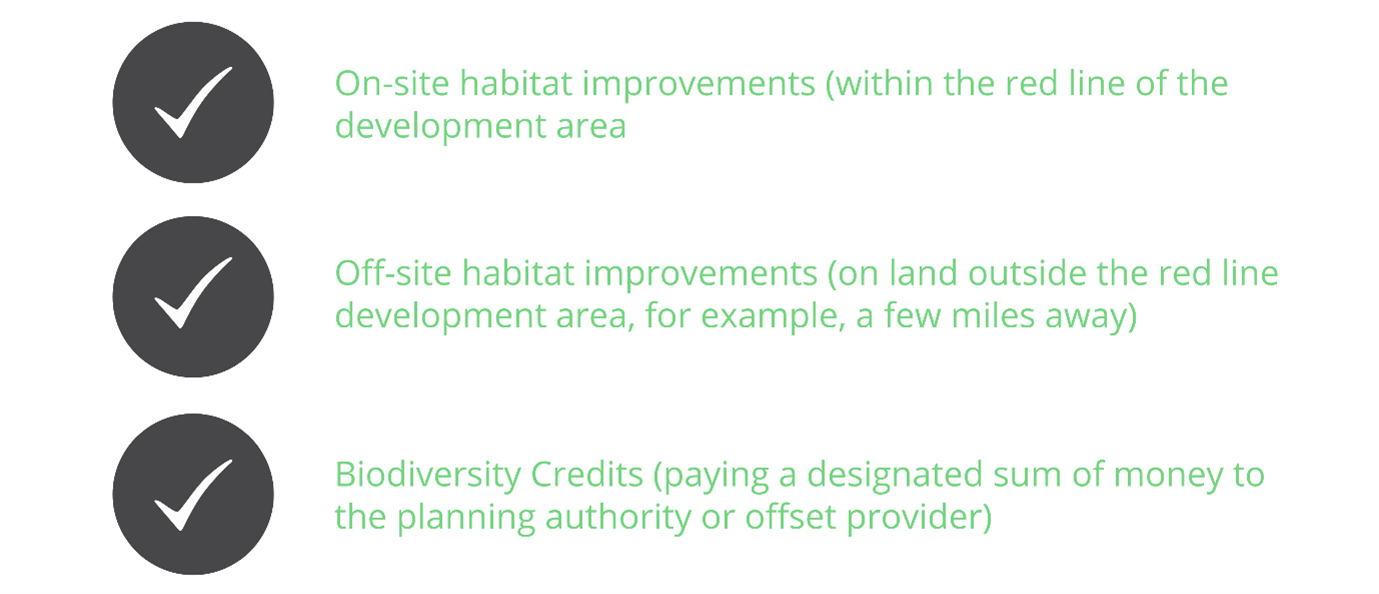UK Environment Act 2021 and Biodiversity Net Gain
By Mark Brown, WKC Group
Overseen by the newly created Office for Environmental Protection, the Environmental Act 2021 creates a post Brexit framework to improve and protect the natural environment in the UK. It makes wide ranging provisions covering waste and recycling, air quality, water, nature and biodiversity, conservation covenants and updates to laws on chemicals.
Planning Implications of the Act
The planning system plays an important role in environmental protection. One of the three overarching objectives in national planning policy is to protect and enhance the environment. The Environment Act 2021 introduces new statutory requirements that strengthen this objective. For example, the implementation of Local Nature Recovery Networks (NRN) to develop a network of wildlife-rich places connected across towns, cities and countryside.
One of the more ambitious provisions of the Environment Act 2021 is that all planning applications in England will be required to demonstrate how a development will enhance biodiversity and protect habitats. Submissions must include assessments demonstrating a commitment to achieve 10% Biodiversity Net Gain (BNG).
When will the BNG legal requirements come into force?
Many local authorities have already adopted BNG but the target for legal requirements to come into force is November 2023.
What is a Biodiversity Metric?
A Biodiversity Metric is a spreadsheet calculator used to audit and account for biodiversity losses and gains. The current industry standard is Natural England’s Biodiversity Metric 3.1. This is explained in greater detail in our article on Calculating Biodiversity Net Gain. It is a requirement to use an approved Biodiversity Metric under the new legislation.
What is a Biodiversity Gain Plan?
Through amendments to the Town and Country Planning Act 1990, the Environment Act 2021 requires all planning permissions in England to be granted subject to a new general pre-commencement condition that require approval of a Biodiversity Gain Plan.
The Planning Authority can only approve the Biodiversity Gain Plan if the biodiversity value attributable to a development exceeds the pre-development biodiversity of onsite habitat by 10% which, for the purposes of legislation is known as the ‘biodiversity gain objective’.
The Biodiversity Gain Plan must include the steps taken to achieve the ‘biodiversity gain objective’. This must include:
How can the 10% gain in biodiversity value be delivered?
The gain can be delivered in three ways, individually or a combination of:
How will habitat be secured?
Once delivered the biodiversity works must be maintained for period of 30 years.
Onsite enhancements must be secured by planning condition, Section 106 obligation or a conservation covenant. Offsite enhancements must be secured under either a Section 106 obligation or a conservation covenant.
A Section 106 obligation refers to Section 106 of the Town and Country Planning Act 1990. It allows a planning authority to enter into a legally binding agreement with a landowner as part of the granting of planning permission.
A conservation covenant is a written agreement between a landowner and a ‘responsible body’ that is registrable as a local land charge. It binds a landowner and their successors to do/not do something on that land for conservation purposes.
What are Biodiversity Credits
Biodiversity credits are a means of providing biodiversity offsetting. Similar to providing off-site BNG, offsetting is where a developer provides BNG off-site, by paying an offset provider to do this for them. Biodiversity units are sold by the offset provider at an approximate price of £20000 per biodiversity unit.
The mitigation hierarchy of avoidance, mitigation, and compensation for biodiversity loss still applies. The preference is for improvement works to be delivered either on or off site. All possible alternative solutions should to be approached before the use of biodiversity credits are considered.
What is the National Register for Net Gain Delivery Sites?
Natural England has been responsible for developing a National Register for Net Gain Delivery Sites. It is a key component of BNG. The register includes information about any site that is being used to deliver BNG. The register is publicly accessible and details the baseline biodiversity value of the delivery site and the expected future biodiversity value of that site. The register contains information about who owns a site, and it enables such sites to be traced back to the individual development whose BNG requirement they are helping to fulfil.
The register plays a key role in minimising the risk of fraudulent and misleading claims within the BNG system by ensuring that the same parcel of land cannot be claimed as the means of delivering BNG for multiple developments. It also ensures that there is a transparent public record setting out what existed on a site before it’s used to deliver BNG and what the site biodiversity outcome is supposed to deliver.
If you would like to know more about the Environment Act 2021, BNG or provision of Biodiversity Metrics please contact us by clicking on the button below.





